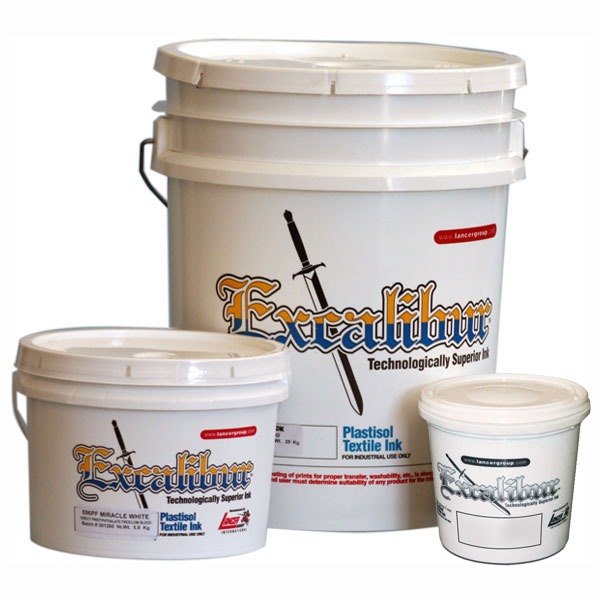
Lancer Group International's STI Silicone Ink System is a state-of-the-art system that produces completely PVC-free and phthalate free prints for athletic uniforms and performance wear garments. Prints will exhibit extremely high-stretch, high-opacity and a soft, smooth hand-feel. This system is extremely bleed-resistant when curing parameters are followed.
USES: For use on cottons, cotton/polyester blends, can be used on cold peel transfers, and on Spandex and Lycra.
PRINTING METHOD: For the most durable transfers a thick ink deposit is recommended. If using direct emulsion coat your screen normally, then face coat the print side of the screen until the necessary stencil thickness is achieved. Capillary films in the150-200 micron range may also be used to achieve a thick stencil thickness.
OPACITY: Excellent opacity.
GEL TEMPERATURE: Temperature-Inks will gel or flash cure when they reach temperatures between 220-240°F for four to six seconds depending upon the flash cure unit as well as the time and temperature at which the flash cure unit has been set. To speed up gelling, pallets may be preheated to temperatures between 120-140°F immediately before beginning full production.
CURE TEMPERATURE: Inks will fully cure after reaching temperatures between 250-290° F for 1½ to 2 minutes inside the curing oven. For delicate fabrics prone to dye migration, shrinkage or fiber damage, cure prints at the lower temperature and higher dwell time.
MIXING CATALYST: Mixing Catalyst--Prior to printing mix catalyst into ink using the following proportions:
White 3-4% by weight.
Clear and Colours 4-5% by weight.
SCREEN FABRIC: Use 83 to 125 monofilament polyester.
SQUEEGEE: 70 durometer or 70/90/70 triple durometer squeegees are recommended.
SCREEN COATING, FILM, BLOCKOUT:Any direct emulsion or capillary film compatible with traditional plastisol textile inks that will produce a thick stencil that produces a thick ink deposit.
MODIFIERS: A small amount of STI7902 reducer (3 to 4%) can be used when necessary.
MIXING PIGMENTS AND BASES:10-15#37; pigment load into appropriate base for application is recommended. CAUTION: Pigment loads higher than 15% can cause crocking and curing issues.
TRANSFERS: T75, T100,or coated polyester release films may be used. For increased durability, use adhesive powder or print H1 (medium grind) adhesive over the entire transfer while wet. Peel cold.
WASHUP: T-125 mineral spirits, or biodegradable washes SYS-2500, SYS-2550 or SYS-2510 screen wash gel.
ALWAYS TEST PRINT BEFORE PRODUCTION!